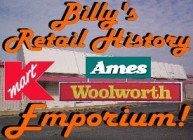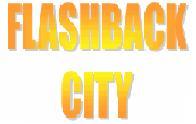
The article describes how malls were basically taking over the world. Keep in mind that this was 20 years ago, years before the open air shopping center and big box stores began to over-dominate malls.
Carolina Circle Mall, Four Seasons Town Centre, and Friendly Shopping Center are mentioned in this article. In fact, the above picture of Carolina Circle Mall (the second floor corridor) happened to come out of this article. The picture was republished on July 1, 2005 when Carolina Circle Mall began its demolition.
So here it is, from November 12, 1989, It’s a Mall World After All! Wait till you get to the part about what Friendly Shopping Center almost did in 1992! No challenge to copyright intended.
Greensboro is a mall town that’s getting maller.
Its true town center-or should I say centre?-is Four Seasons Town Centre, three stories and three city blocks of Radio Shacks, Chick-Fil-As and Electric Eels. According to Four Seasons’ surveys, most people in Guilford County, at least 67 percent, visit the 1.2 million square-foot mall off Interstate 40 at least once a month.
On the other side of town, recently renovated Carolina Circle Mall is making a comeback, drawing shoppers with its well-stocked department stores and carousel centerpiece.
And the owners of Greensboro’s mall alternative Friendly Shopping Center, say chances are good Friendly will go the way of gurgling fountains and Muzak, Starmount Company has tentative plans to convert the shopping center into an enclosed mall in 1992.
There’s no doubt, it’s a mall world. Teenagers socialize there; fitness buffs walk laps there; kids even trick-or-treat there.
The National Research Bureau reports there are 82,560 malls nationwide. In a typical month, 170 million American adults shop at a mall.
In Rome, cities were often centered around entertainment structures such as The Coliseum. In medieval Europe, the cathedral embodied the religious spirit of the age. Our era of malldom is really the logical conclusion of a society moving from an industrial base to a service-oriented consumer one.
The transition has been hard for some. Writers bermoan the emergence of shopping mall culture, a character in Sam Shepard’s play “Curse of the Starving Class” calls the mall that will replace his home “a zombie city”, and academics build careers studying the phenomenon.
Even Chrissie Hynde lamented the change in The Pretenders’ song, “My City Was Gone,” when she sang “All my favorite places had been replaced by shopping malls”.
As in many cities, Greensboro’s suburban shopping centers and malls have taken the place of the downtown shopping district. The department stores that once drew shoppers downtown moved out in the ‘70s. Department stores such as Thalhimers, Ivey’s, Belk, Sears and Montgomery Ward are now the anchors that draw shoppers to Four Seasons, Friendly, and Carolina Circle Mall.
David Mitchell, an urban sociologist at the University of North Carolina at Greensboro, says a city loses something when it centers itself around a mall instead of downtown.
“The mall owners have the ability to control activities and they have a strong desire to maximize buying potential,” Mitchell says. “A downtown has much more diverse activities, festivals, and parades.”
Malls tend to separate people, Mitchell says. When department stores were downtown, he points out, suburban homemakers would mingle with lawyers at lunch, but now the two groups are separated in city and suburbia.
In his 1985 book The Malling of America, William Severini Kowinski argues that malls are still in their infancy and will continue to grow and expand in the next “mallennium”. He predicts a culture of “mallcondo continuum” where you can eat, shop, work, and play in one huge “mallolithic” structure without ever needing to know the outside temperature.
He also believes we will eventually retreat to the mall if natural or man-made disasters threaten our cultural security, just as medieval huddled in castles during the Dark Ages.
“Malls are already becoming the citadels of our time, fortresses protecting the dream worlds of our culture,” Kowinski writes.
America grew attached to the mall in only one generation. Baby Boomers’ car-driven culture addiction to air-conditioning and desire to consume paved the way for the suburban mall.
Malls, in turn, borrowed from television. Boomers’ central culture guide, to create a sanitized version of the American ideal they would eventually replace, Main Street. Four Seasons, for example, is designed to be a mini-Main Street complete with simulated old town square.
Greensboro’s real main street became obsolete as a retail hub when it was physically bypassed by the new paths of the car culture, Interstates 40 and 85. These days, although downtown is basking in the dust of three new office towers and umpteen parking decks, shopping is mostly limited to antiques.
Greensboro got its first glimpse of the mall in 1961, when award-winning architect Edward Durell Stone came to town to show the first architectural plans of a new shopping center named Four Seasons.
Stone promised it would be free of the “neon vulgarities” that characterized much of the architecture of the day. And he said the center would not house businesses out to “catch a penny and a quick buck. It will be a place of beauty, interest, and enjoyment”.
Stone’s plan was dumped in favor of a mall design and construction began in 1972, early enough to make it Greensboro’s first mall. Carolina Circle Mall followed two years later. Before long, even old textile mills were being converted to malls such as Cotton Mill Square.
Four Seasons owner Joseph Koury had wanted a three-story mall back in the early ‘60s but had trouble convincing folks it would work. When the mall was built in the early ‘70s, it included a third story that was used for storage. A third story of shops was opened in 1987 and Four Seasons Mall became Four Seasons Town Centre.
With its 175 stores, 23 restaurants, and four movie screens, Four Seasons has become Greensboro’s shopping and entertainment hub.
“We’re really a town within a town,” says Linda Jones, marketing director for Koury Corp. “We have everything you need here from a post office to a drivers’ license office.
And the mall is still growing. Koury plans to eventually connect the mall and its sister Four Seasons Holiday Inn. The proposed 30-story hotel tower would be the city’s tallest building.
Since it is an enclosed, climate-controlled bubble, the mall frees shoppers from the weather. Despite its name, Four Seasons is seasonless, always bright with plants growing year round.
In the summer, shoppers come to escape heat and humidity. In the winter, teens can check each other out without the cocoons of heavy coats. Every morning, legions of mall walkers stomp through the windless, rainless corridors without dirtying their shoes.
Climate control has helped the mall knock off its predecessor, the shopping center, as the dominant facet of suburban culture.
Shopping centers were born out of the car culture of the post-World War II era. As Mom and Dad were busy procreating and moving to the suburbs, they began purchasing automobiles in record numbers.
Meanwhile, television advertisements showcased the spoils of the post-war boom. But in burgeoning suburbia, there weren’t enough places to buy such wonders as vacuum cleaners, lava lamps, and polyester suits.
The shopping center, and eventually the mall, completed the link between television and the highway. As major department stores and national chains moved to the suburbs, shoppers had no trouble finding right in their own neighborhood everything they’d seen advertised on television.
Friendly Shopping Center was born in 1953 when it was just outside the city limits.
In the beginning, Friendly was to be a modest project designed to look like a Williamsburg Village. It grew through the ‘60s and early ‘70s as downtown department stores followed customers to the suburbs. Forum VI, a small mall with exclusive shops and restaurants, was added to the Friendly complex in 1975.
Even as it grew, Friendly retained a neighborhood shopping center feel that lived up to its name. Free from the fake ambience and overwhelming structure of the mall, it’s still a place where you can run into neighbors at their cars and meet friends for a quick cup of coffee.
It also is a unique retail hybrid that blends the outside and inside, the car and the pedestrian, the mom-and-pop stores of downtown and the national chains of the mall.
But Friendly’s days as a shopping center may be numbered.
Friendy’s owners, the Starmount Company, have said chances are good the shopping center will be made into a mall beginning in 1992. The conversion would come in several phases. In each phase some of the existing buildings would be torn down and parking lots ripped u, replaced by a mall section.
“The years are taking their toll, and it is becoming obsolete,” says Elvin Parks, president of Starmount. “We must do whatever it takes to keep this a top scale center”.
A mall would allow for more stores and more diversity for shoppers. But it won’t be as easy for shoppers to pull up to the store they want, dash in and out in a few minutes. Malls keep shoppers contained, forcing them to walk around more and, merchants hope, purchase more.
What about shoppers who aren’t mall friendly?
One hopeful sign for them is the rebirth of open-air markets. At Greensboro’s Quaker Village, for example, a remarkable unmalling happened recently when the developer pulled the roof of the mini-mall and returned it to an open air center.
Mall loathers also have to ally themselves with the shopping center. These strip centers, with their grocery stores, video rental shops, and hair salons, continue to draw shoppers in search of everything from garden hoses to styling mousse.
What shopping centers lack in beauty, they make up for in honesty. While a few try to pass themselves off as quaint towns in concrete clothing, most simply get people in and out quickly with no-nonsense style.
And then there’s downtown. A few civic leaders are tossing around a new idea they say would be just the thing to reinvigorate downtown.
They want to build a mall.












